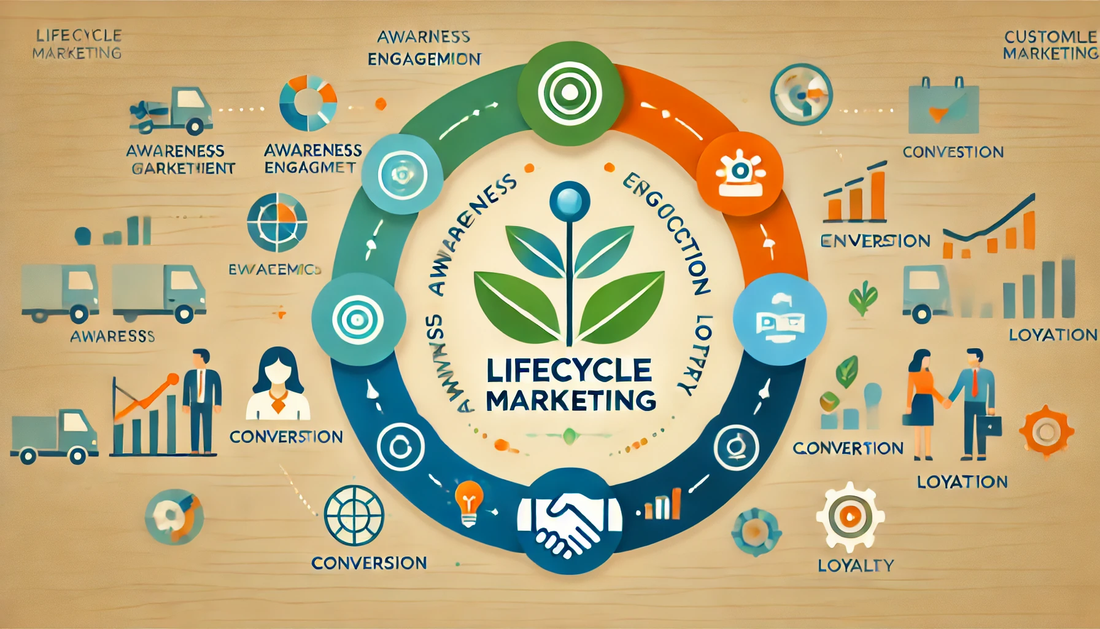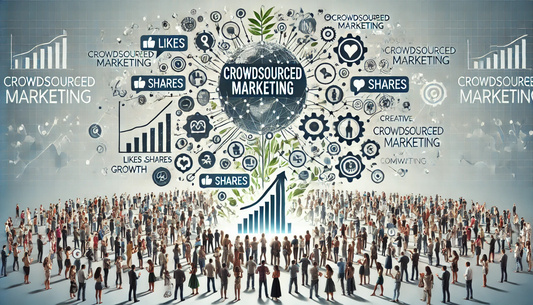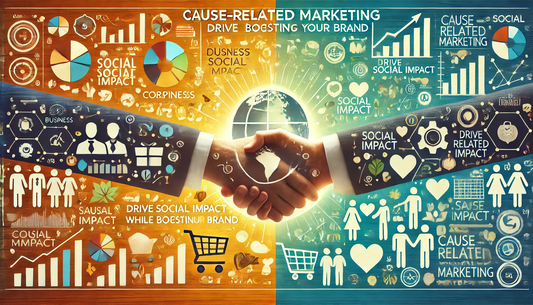🚀 Introduction to Lifecycle Marketing
Ever wonder why some startups capture the market's attention and sustain growth while others struggle to stay afloat? 🌟
The difference often lies in how they manage customer relationships. Welcome to lifecycle marketing—a powerful strategy that nurtures customers from their first interaction to becoming loyal advocates. 💼💖
🌐 What Is Lifecycle Marketing?
Lifecycle marketing is a comprehensive approach that guides potential customers through every phase of their journey with your brand.
It covers all stages—from initial awareness and engagement to conversion, retention, and advocacy. 🎯
By delivering tailored experiences that resonate with customers' needs at each touchpoint, it builds trust, enhances satisfaction, and encourages long-term loyalty. 🤝
💡 Why Is It a Great Strategy for Startups with Limited Resources?
Startups often face resource constraints, both in budget and manpower.
Lifecycle marketing offers a cost-effective alternative by focusing on high-return activities. With lifecycle marketing, startups can make a significant impact without overwhelming resources, leveraging automation for maximum efficiency. 🌱💸
🛠️ How Lifecycle Marketing Works
🗺️ Mapping the Customer Journey
The customer journey is a roadmap of interactions with your brand, covering stages like:
- Awareness: They discover your brand 🌍
- Consideration: They evaluate your offerings 📊
- Purchase: They make a buying decision 💳
- Retention: They continue to engage 💬
- Advocacy: They recommend you to others 📣
Lifecycle marketing tailors strategies to each stage, ensuring customer needs are met effectively. 🌈
🔍 Leveraging Lifecycle Marketing to Gain Visibility
Startups can use lifecycle marketing to boost visibility by:
- Personalizing Communications: Create messages that resonate deeply with specific customer segments. 💌
- Utilizing Multiple Channels: Reach customers on social media, email, and in-app notifications. 📱💻
- Encouraging User Engagement: Build a community around your brand through interactive content and events. 🎉
🌟 Benefits for Startups
Lifecycle marketing provides startups with valuable advantages:
💰 Lower Marketing Costs
Rather than casting a wide net, lifecycle marketing targets specific segments and stages, reducing unnecessary spending. It’s more cost-effective to focus on retention and advocacy than solely on acquisition. 📉
🌍 Access to a Larger Audience
Satisfied customers become brand ambassadors. Word-of-mouth marketing expands your reach organically, as people love to share positive experiences. 🗣️✨
🤝 Credibility Through Association with Established Brands
Collaborations with reputable brands can elevate your credibility, exposing you to new audiences and enhancing your startup’s trustworthiness. 🤩
⚠️ Challenges and How to Overcome Them
While beneficial, lifecycle marketing comes with challenges:
🧭 Brand Alignment
Maintain consistency across all communications to avoid confusing customers. 🖋️
🎇 Competition for Attention
To stand out, use storytelling and data to create messages that genuinely resonate. 🌌
⏳ Resource Constraints
Focus on high-impact areas, using automation to optimize efficiency. 🔄
📚 Real-Life Examples or Case Studies
Learning from successful companies offers valuable insights. Here are examples of startups that implemented lifecycle marketing effectively:
- Uber’s referral program, incentivizing users with free rides to drive rapid growth. 🏙️
- Evernote’s freemium model, offering a free version to nurture users and encourage upgrades. 📔
- Slack’s free trial for small teams, encouraging wider adoption across larger organizations. 💼
- Spotify’s curated playlists based on listening history to increase user engagement. 🎶
- HubSpot’s educational content, helping users make the most of their tools. 📚
- Dropbox’s early-access sharing and collaboration features, making it viral among users. ☁️
- Grammarly’s personalized emails that show progress, keeping users engaged. ✍️
- Canva’s user-friendly tutorials for beginners, driving user retention and loyalty. 🎨
- ClassPass’s targeted offers to keep users engaged with gym visits and memberships. 🏋️
- LinkedIn’s notifications that encourage users to update profiles and stay active. 📇
📝 Step-by-Step Guide to Implementing Lifecycle Marketing
🎯 Step 1: Define Clear Goals
Decide what you aim to achieve, be it awareness, conversion, or retention. 🎓
👥 Step 2: Understand Your Audience
Conduct research to learn about your customers’ needs and interests. 🕵️♀️
📊 Step 3: Segment Your Audience
Divide your audience into groups based on behavior or demographics for precise targeting. 🗂️
🖼️ Step 4: Create Tailored Content
Develop content that speaks to each segment, using language and visuals they’ll relate to. 🎨
💬 Step 5: Choose the Right Channels
Focus on the platforms where your audience spends the most time. 📱💻
🤖 Step 6: Implement Automation Tools
Use marketing automation to manage campaigns, save time, and ensure consistency. 🤖
📈 Step 7: Monitor and Analyze Performance
Track metrics like open rates, conversion rates, and lifetime value to refine strategies. 📊
🔄 Step 8: Iterate and Optimize
Continuously improve your campaigns based on performance insights. 🔄
💡 Tips for Maximizing Results
📈 Personalize at Scale
Use data to tailor messages without compromising efficiency. 📬
🔍 Integrate Customer Feedback
Incorporate feedback to improve your product and customer experience. 🗣️
🎓 Focus on Customer Education
Provide resources that help customers use your product effectively. 🏆
👥 Build a Community
Create spaces for customers to connect, such as forums or social groups. 💬
💼 Stay Agile
Keep adapting based on market trends and customer needs. 🔄
🎉 Conclusion
Lifecycle marketing is more than a trend—it’s a strategy that can propel your startup toward sustainable growth. 🌱
By nurturing relationships at every stage, you build a loyal customer base ready to advocate for your brand.
With careful planning and the right tools, any startup can implement lifecycle marketing to thrive in a competitive market. Start now, and watch your business flourish! 🚀🌟










